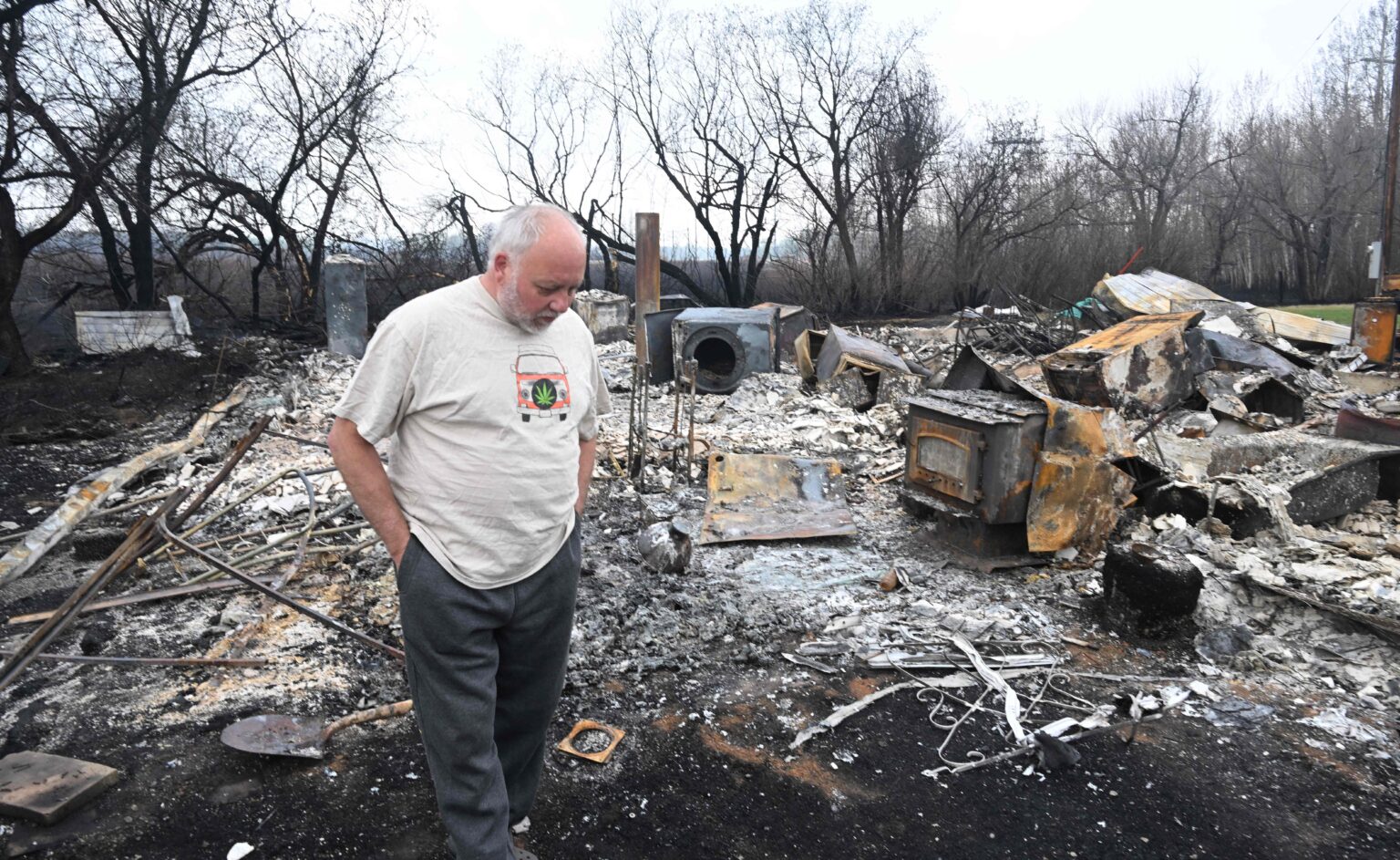 The climate-warming emissions from the world’s 88 largest fossil fuel companies and cement manufacturers are behind more than one third of the wildfires that have increasingly plagued Western North America in recent decades, according to new research.
The climate-warming emissions from the world’s 88 largest fossil fuel companies and cement manufacturers are behind more than one third of the wildfires that have increasingly plagued Western North America in recent decades, according to new research.The study published today in Environmental Research Letters by the Union of Concerned Scientists, a nonprofit science advocacy organization, and the University of California, Merced, compared the companies’ emissions since 1901 with the rise in the vapor pressure deficit—a measurement of the water demand, or “thirst,” of the atmosphere. The report found that since 1986, 19.8 million acres that burned—37 percent of the total area scorched by wildfires in the western U.S. and southwestern Canada—burned as a direct result of the companies’ emissions increasing atmospheric thirst. Since 1901, those same emissions have contributed to about half of the region’s observed increase in fire-danger conditions.
When an area sees a rise in the vapor pressure deficit, the rise in wildfires increases exponentially, the study found. Other factors, like decades of wildfire suppression leading to a build-up of vegetation and the development of communities into fire-prone areas are contributing to a trend of bigger, hotter and more costly wildfires throughout the Western U.S. But climate change itself and the companies behind it, the study finds, “has enabled a steep increase in the forest area that has burned across the region since the mid-1980s.”
“Because of the contribution the emissions from these carbon producers have made, those companies should be held accountable for some of those climate impacts,” said Carly Phillips, a coauthor of the new study and a research scientist at the Union of Concerned Scientists’ Science Hub for Climate Litigation. Those carbon producers include companies like ExxonMobil, Chevron, BP and state-owned oil producers like Saudi Aramco and Coal India.
The study’s findings come as a heatwave grips the Pacific Northwest and dozens of wildfires have broken out in western Canada, with more than one million acres already burned and thousands of residents forced to evacuate.
The increase in wildfires has already had profound effects on the region. The Marshall Fire burned some 6,200 acres, destroying at least 1,084 homes and seven commercial structures, in Boulder, Colorado, during the winter of 2021, when destructive wildfires were once rare. Three years earlier, the Camp Fire, the deadliest and most destructive wildfire in California history, burned more than 11,000 homes, displaced 50,000 residents and killed 85 people in Paradise, California.
The wildfires are also burning more acreage than ever. Since 2000, California, Colorado and New Mexico all have had their largest conflagrations on record. Wildfire smoke is increasingly driving adverse health effects, especially in vulnerable populations, and the blazes are costing the federal government, states and local communities billions of dollars. But, despite it all, people continue to move to fire-prone areas in the Western U.S.
Previous research has shown that just a little bit of warming in temperature can bring a non-linear increase in the vapor pressure deficit, said David Breshears, a regents professor of natural resources at the University of Arizona who was not a part of the new research. That increase has been shown to have a direct link to the increase in wildfires in the Western U.S. “That’s really stressful for plants and risky in terms of fire weather,” he said.
The new study, Breshears said, is taking another step in furthering that understanding and what is causing it. “We’re able to say with more confidence, ‘Yes, these emissions that we’re producing are really directly linked to these big wildfires that we’re seeing,’” he said. “If we want to try and slow this down, we better get on the stick and really put the brakes on the emissions as fast as we can.”
Informing the public so it can hold the large emitters responsible for the role they play in the increasing number of wildfires in Western North America is crucial to drive policy change, such as enacting stronger limits on heat-trapping emissions, Phillips said. Research also could aid in litigation against fossil fuel companies.
“In history, we can see times when industries were held accountable, like tobacco and asbestos,” she said. “A big piece of that was research that linked the company’s products to those harms. And I think that this research fills a similar gap when it comes to carbon producers and climate change.”
There are two fronts dealing with the increase in wildfires, Breshears said: land managers working at ground level to reduce fire risks in forests and local communities, and the rising level of greenhouse gases in the atmosphere from carbon polluters, which are directly linked to the increasing temperatures and aridity that make vegetation more likely to burn.
“The land managers are getting overwhelmed by the emissions,” he said. “They can only do so much with what they have in the toolbox. This [study] is really another bit of information that’s indicating a warning about letting emissions continue to increase with time.”